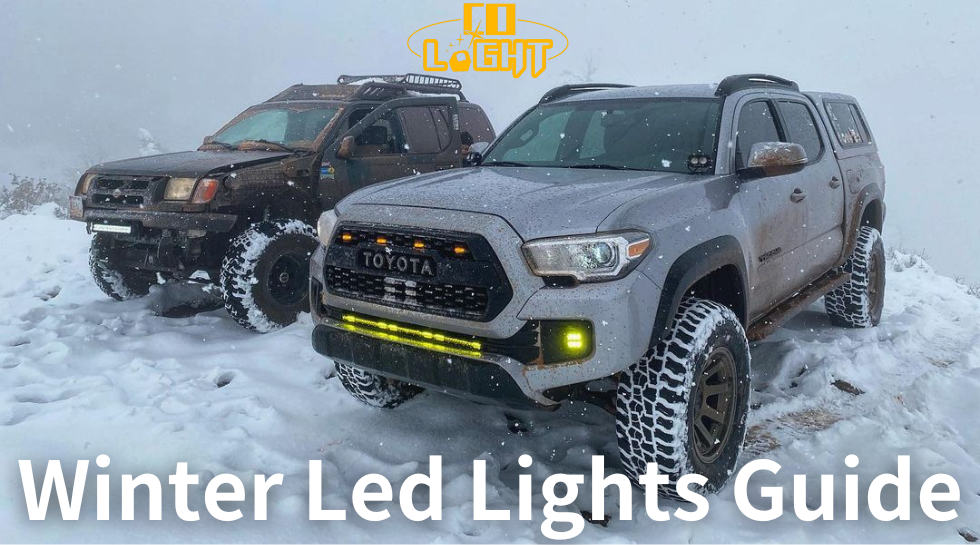A medida que las temperaturas bajan gradualmente, el invierno se acerca. Si bien el paisaje invernal puede ser encantador, también trae desafíos y riesgos en las carreteras. Ya sea que viaje diariamente al trabajo o esté planeando un viaje de larga distancia, el duro clima invernal y las condiciones adversas de la carretera pueden representar una amenaza para la seguridad al conducir.
En esta publicación del blog, brindaremos consejos para conducir en invierno, centrándonos en la instalación de las luces de conducción adecuadas, y cubriremos información clave sobre cómo mejorar la visibilidad del vehículo y qué tipo de luces instalar. Ya sea que sea un conductor novato o experimentado, estas sugerencias lo ayudarán a garantizar su seguridad durante la conducción en invierno.
Exploremos cómo mantenerse seguro en las carreteras durante la temporada de frío. Siga leyendo para obtener valiosos consejos de conducción. Aquí encontrará algunos consejos sobre equipos de seguridad para automóviles de COLIGHT que lo ayudarán a conducir de manera más segura en el duro clima invernal.
(1) Luz antiniebla LED COLIGHT
Durante la temporada de invierno, además de la lluvia y la nieve, la niebla también es un fenómeno común. En invierno, la niebla densa puede persistir durante días, especialmente en las zonas costeras. Si tomamos como ejemplo a Estados Unidos, las regiones occidentales como el Valle Central de California, el Área de la Bahía de San Francisco y el Valle de Willamette en Oregón, así como ciertas áreas a lo largo de la costa este del Atlántico Norte, como Maine, New Hampshire y Massachusetts, suelen experimentar diversos grados de niebla densa. La niebla reduce la visibilidad y aumenta los riesgos al conducir, por lo que las luces antiniebla son un complemento esencial para su vehículo.
Las luces antiniebla emiten un haz de luz amplio y bajo, que normalmente se ubica en la parte inferior del frente del vehículo y se dirige hacia abajo para reducir el deslumbramiento. Emiten un haz de luz brillante que puede atravesar la niebla, la nieve o la neblina, lo que proporciona una mejor iluminación de la carretera en condiciones de poca visibilidad.
Por ejemplo, la serie Rob2 Pro de 4 pulgadas de COLIGHT es ideal para usar como luces antiniebla, se recomienda usar el haz amarillo difuso/inundado y se puede instalar en el parachoques para lograr una luz amarilla amplia, lo que mejora la visibilidad. Además, agregar luces de la serie Rob2 Pro en la parte trasera de su vehículo puede ayudar a otros conductores a identificar fácilmente su vehículo y reducir el riesgo de colisiones traseras. Si prefiere la luz blanca después de la temporada de invierno, puede reemplazar las lentes para obtener el haz blanco.
En resumen, las luces antiniebla son un equipo de seguridad esencial para los vehículos en condiciones climáticas adversas y de baja visibilidad. Proporcionan una mejor iluminación de la carretera, reducen los riesgos de accidentes y mejoran la seguridad al conducir.
(2) Barra de luz LED COLIGHT
Si busca una barra de luz adecuada para usar en condiciones de lluvia, niebla y nieve en invierno, la barra de luz de la serie B10 de COLIGHT es la opción perfecta. Ofrece opciones de luz amarilla y blanca, y su lente ámbar proporciona una iluminación suave que reduce el deslumbramiento. Incorpora una combinación de tecnología óptica de foco y reflector, que minimiza el deslumbramiento del capó y evita la fatiga visual significativa o las imágenes superpuestas cuando la luz se refleja en otros vehículos de un convoy.

La barra de luz de la serie B10 cuenta con ventilaciones laterales y sellado de silicona moldeado a medida, lo que garantiza una carcasa impermeable con clasificación IP68 que puede soportar temperaturas de hasta -40 °C. Esto garantiza que la humedad no ingrese a la carcasa, lo que evita fugas o empañamiento de la lente. Esta es una consideración fundamental, especialmente para quienes residen en regiones propensas a la lluvia, el congelamiento o las nevadas.
(3) Luz de conducción todoterreno
Las luces de conducción todoterreno son esenciales para las condiciones invernales y puedes instalarlas en el parachoques delantero de tu vehículo para lograr una potente salida de luz.
La serie Cube4 de 4,5 pulgadas de COLIGHT cuenta con reflectores personalizados y chips de alta potencia que brindan una salida de luz enfocada similar a un rayo láser. Es ideal para caminos rurales rectos y vehículos todoterreno de alta velocidad. La luz viene en una carcasa de aleación fundida de altísima calidad con aletas de enfriamiento pasivo, lo que garantiza una larga vida útil. La lente Lexan de primera calidad es resistente a rayones, desgaste y decoloración. Con el respaldo de ventilaciones de ecualización de presión, ayuda a prevenir la entrada de agua, polvo y contaminantes. Con una clasificación de impermeabilidad IP68, resiste eficazmente el polvo y el agua, lo que la hace adecuada para diversas condiciones climáticas adversas. 
Hay dos opciones de color de luz disponibles: blanco y amarillo. Si conduce en invierno, elija la lente amarilla para producir un haz de luz amarillo potente que lo ayudará a ver la carretera cuando llueva o nieve. Si prefiere el haz de luz blanco, también puede lograr una combinación de luz blanca y amarilla instalando las cubiertas amarillas.
Conclusión
Conducir en invierno puede ser un desafío, pero instalar las luces adecuadas en el vehículo puede reducir significativamente los riesgos y garantizar la seguridad durante la temporada invernal. Esperamos que esta guía de conducción en invierno le haya resultado útil y le permita conducir de forma segura en invierno.Si tiene alguna pregunta o necesita más asesoramiento, no dude en ponerse en contacto con nosotros. ¡Le deseamos una conducción segura y agradable durante el invierno!



